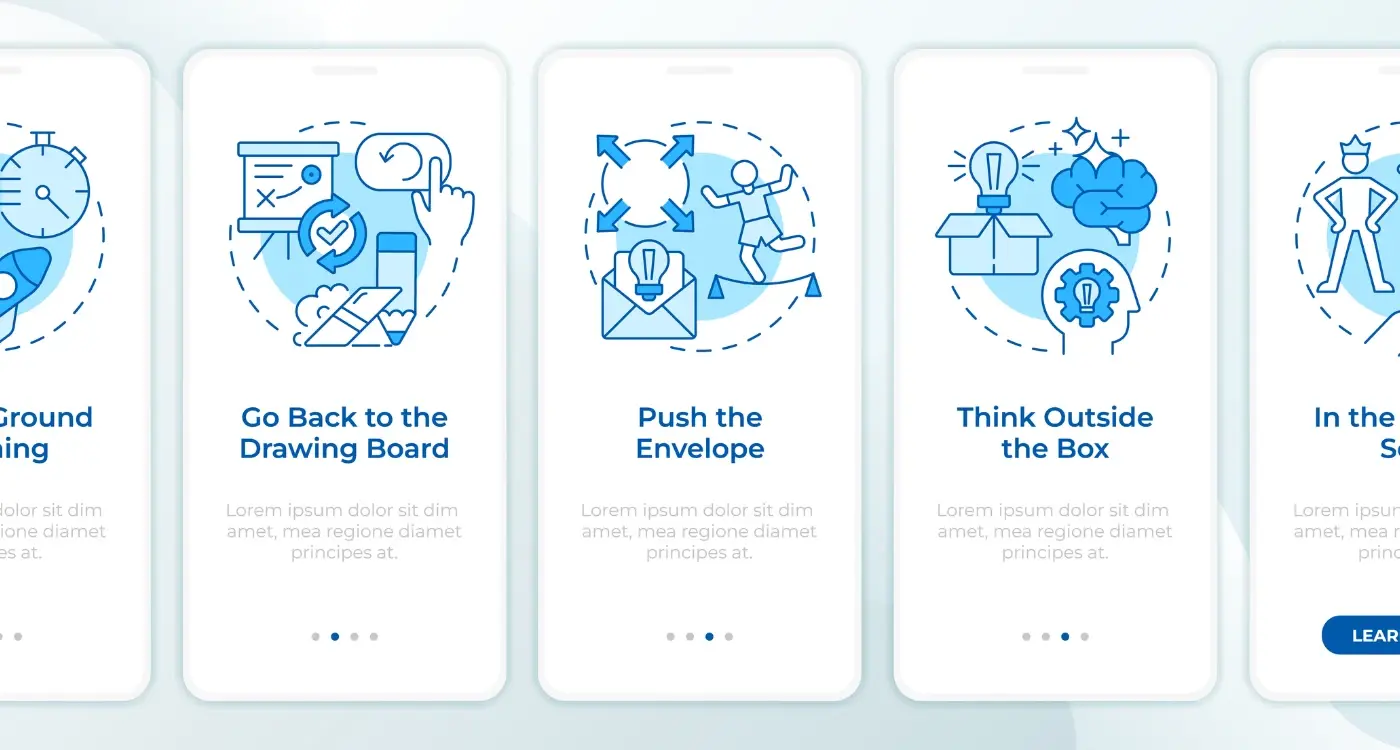How Often Should I Check My App's Performance?
Most mobile apps die within the first year of launch—not because they're poorly built, but because their creators stopped watching them perform. It's a harsh reality that catches many app owners off guard. You launch your app, see some initial downloads, and then... silence. Your beautiful creation slowly fades into digital obscurity whilst you wonder what went wrong.
The truth is, launching a mobile app is just the beginning. What happens after launch determines whether your app thrives or becomes another casualty in the app stores. Regular performance monitoring isn't just good practice—it's the difference between success and failure. Your app is like a living, breathing entity that needs constant attention to stay healthy and competitive.
An app without regular performance monitoring is like a car without a dashboard—you're driving blind until something breaks down
This guide will show you exactly how often you should be checking your app's performance, what to look for, and when to dig deeper. We'll cover everything from daily health checks to quarterly strategic reviews. By the end, you'll have a clear maintenance schedule that keeps your app running smoothly and your users happy. Because let's face it—in today's crowded app marketplace, you can't afford to let your app's health slide.
Understanding App Performance Basics
After working with mobile apps for over eight years, I've learnt that performance monitoring isn't just about checking if your app crashes—though that's certainly part of it! App performance covers everything from how quickly your screens load to how much battery your app drains from users' phones. Think of it as your app's health check.
The main areas you need to watch are pretty straightforward. Load times matter because nobody wants to wait five seconds for a simple button press to work. Memory usage is important too—apps that hog too much RAM get killed by the operating system, which means frustrated users. Battery consumption can make or break user retention; people will delete apps that drain their phone faster than they can say "low battery".
Key Performance Metrics to Track
- App launch time and screen transition speeds
- Memory usage and potential memory leaks
- Battery consumption during typical usage
- Network request response times
- Crash rates and error frequencies
- User engagement metrics like session length
The good news is that most of these metrics can be tracked automatically using built-in tools or third-party services. You don't need to manually test every single feature every day—smart monitoring does the heavy lifting for you.
Setting Up Your Monitoring Schedule
Creating a proper monitoring schedule for your mobile app isn't rocket science, but it does require a bit of planning. I've worked with clients who check their app performance obsessively every hour—and others who haven't looked at their metrics in months. Neither approach works well for long-term app health.
The key is finding a rhythm that matches your app's complexity and user base. A simple utility app might need less frequent monitoring than a social media platform with thousands of daily active users. Start by identifying what needs checking daily, what can wait until weekly, and what only requires monthly attention.
Set up automated alerts for critical issues like crashes or server downtime so you're not constantly watching dashboards but still catch problems quickly.
Building Your Schedule Framework
Your monitoring schedule should include three layers: immediate alerts for emergencies, regular check-ins for trends, and deeper reviews for strategic planning. Most successful apps I've worked on follow a pattern of daily quick checks, weekly performance reviews, and monthly deep dives into user behaviour and technical metrics.
The beauty of a structured approach is that it becomes second nature. You'll spot problems before they become disasters and identify opportunities for improvement without getting overwhelmed by data.
Daily Checks That Matter
After eight years of building apps, I've learnt that daily monitoring doesn't mean checking everything—it means checking the right things. You want to spot problems before they become disasters, but you don't want to spend your entire morning buried in charts and graphs.
The Non-Negotiables
Start with crash rates. If your app is crashing more than usual, you need to know immediately. Most monitoring tools will send you alerts, but a quick glance at your dashboard takes thirty seconds and could save you thousands of users. I check this before my morning coffee—call it professional paranoia!
User reviews are your second priority. New one-star reviews often highlight issues that metrics might miss. Someone writing "app won't open since yesterday" tells you more than a graph sometimes. Don't read every review, but scan for patterns in the most recent ones.
Quick Performance Glances
Load times and active user numbers round out your daily routine. If your app is suddenly taking longer to start or you're seeing fewer people using it, these are early warning signs. The beauty of daily checks is that you catch trends before they become problems—and trust me, fixing small issues is much easier than explaining to your boss why half your users disappeared overnight.
Weekly Performance Reviews
After doing this for eight years, I've learnt that weekly reviews are where the magic happens with mobile app maintenance. Daily checks catch the fires, but weekly reviews show you the patterns—and patterns are what help you make smart decisions about your app health.
Every week, I sit down with a proper cup of tea and look at the bigger picture. User retention rates, crash reports grouped by device type, and app store ratings all get my attention. The weekly review isn't about panic; it's about understanding trends that daily checks might miss.
What to Focus On
Look at your user acquisition numbers compared to last week. Are people downloading your app but not sticking around? That's a red flag. Check your app's performance across different devices too—Android fragmentation can be a nightmare if you're not keeping tabs on it.
Weekly reviews help you spot the difference between a temporary blip and a genuine problem that needs fixing
Making It Sustainable
Don't try to analyse everything at once. Pick three or four key metrics that matter most to your mobile app and stick with them. I usually spend about 30 minutes on this—any longer and you're probably overthinking it. The goal is consistency, not perfection.
Monthly Deep Dives
Once a month, I like to step back and really examine what's been happening with the app over the past four weeks. This isn't just a quick glance at numbers—it's a proper investigation into patterns, trends, and the bigger picture stuff that daily checks might miss.
Your monthly review should focus on user behaviour changes, feature adoption rates, and performance trends that have developed over time. I've found that bugs which seemed minor in daily reports can reveal themselves as major issues when you look at a month's worth of data. Same goes for user complaints; what looks like isolated incidents might actually be part of a larger problem.
What to Review Each Month
- User retention rates compared to the previous month
- Feature usage statistics and adoption patterns
- Customer support ticket themes and frequency
- App store ratings and review sentiment analysis
- Performance metrics trends (load times, crash rates)
- Revenue or conversion rate changes
The monthly deep dive is where you'll spot seasonal patterns, identify which updates worked well, and plan your next moves. Don't rush this process—set aside a few hours to really dig into the data and understand what your app has been telling you over the past month.
Quarterly Strategic Assessments
Every three months, I sit down with my team and do what I call the "big picture review"—this is where we zoom out from all the daily metrics and weekly reports to ask the really important questions. Are we still heading in the right direction? Is our mobile app actually serving our users the way we intended? These quarterly strategic assessments are where the real magic happens for long-term app health.
Think of these sessions as your app's MOT. You're not just checking if everything's running smoothly right now, but whether your app is fit for purpose over the coming months. I've seen too many apps that looked fine on paper but were slowly losing their relevance because nobody stepped back to assess the bigger picture.
What to Review During Your Quarterly Assessment
- User retention rates compared to three months ago
- Feature usage patterns and which features are being ignored
- App store ratings and review sentiment trends
- Technical debt and maintenance requirements
- Competitor analysis and market positioning
- Revenue performance and conversion rates
Schedule your quarterly reviews at the same time each quarter and invite key stakeholders from different departments. Fresh perspectives often reveal blind spots that technical teams miss.
This is also the perfect time to plan your maintenance roadmap for the next quarter. Which bugs need fixing? What new features should you prioritise? Are there any security updates on the horizon? Getting these answers sorted every three months keeps your app healthy and your users happy.
When to Check More Frequently
Sometimes your regular monitoring schedule just isn't enough. I've learnt this the hard way over the years—there are certain situations where you need to be watching your app like a hawk, checking performance metrics several times a day rather than sticking to your usual routine.
Launch Week and Major Updates
When you're launching a new app or pushing out a significant update, daily checks become hourly checks. User behaviour is unpredictable during these periods; you might see a sudden spike in downloads that crashes your servers or discover a bug that only appears when thousands of people use a feature simultaneously. I always tell my clients to clear their calendars for the first 48 hours after any major release.
When Something Goes Wrong
If you notice crash rates climbing or user ratings dropping suddenly, it's time to switch into emergency mode. Check your analytics every hour until you identify the problem and implement a fix. Don't wait for your weekly review—app store algorithms are ruthless and a few days of poor performance can tank your rankings for months.
Marketing campaigns, seasonal events, and competitor launches also warrant increased monitoring. Your app doesn't exist in a vacuum, and external factors can dramatically impact performance overnight.
Conclusion
After years of working with mobile apps across different industries, I've learnt that regular performance monitoring isn't just good practice—it's what separates successful apps from ones that quietly disappear from app stores. The monitoring schedule we've covered gives you a solid framework, but remember that every app is different; yours might need more frequent checks during busy periods or less during quieter times.
The key is consistency rather than perfection. Start with daily basics like crash monitoring and user feedback, then build up to your weekly performance reviews and monthly deep dives. Don't try to do everything at once—you'll burn out and probably miss the really important stuff anyway.
What I find most important is that you're actually acting on what you discover during these checks. There's no point monitoring your app health if you're not going to fix the problems you find. Your users will thank you for it, and your app's ratings will too.
Mobile app maintenance might not be the most exciting part of app ownership, but it's what keeps your app running smoothly and your users happy. Set up your monitoring schedule, stick to it, and adjust as needed. Your future self will be grateful you put in the effort now.
Share this
Subscribe To Our Learning Centre
You May Also Like
These Related Guides

How Do I Know If My App Is Ready for More Users?

How Do I Create an Onboarding Flow That Reduces App Abandonment?



